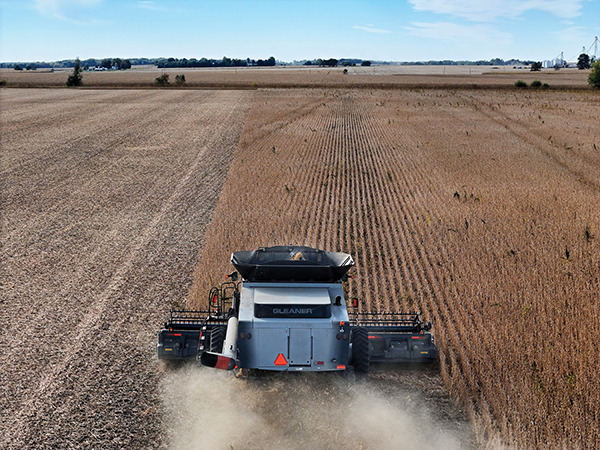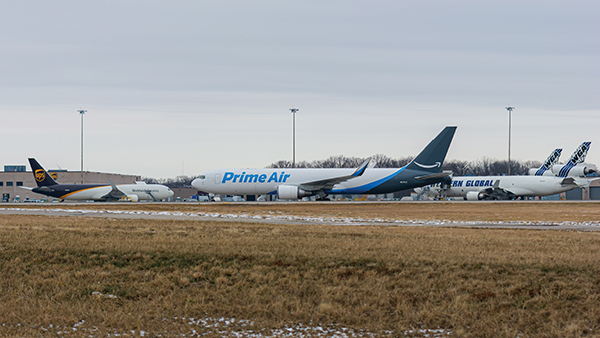
From the fertile soils that make up the majority of the Prairie State is landmass to Chicago and other bustling metropolitan areas that collectively host the fourth-highest number of Fortune 500 companies in the nation, Illinois is a land of opportunity for businesses seeking top-tier talent, robust infrastructure, access to freshwater and energy and a supportive environment.
Illinois is Thriving and the Momentum is Growing
Illinois is strengthening and adding options to its strong arsenal of incentives. These additions are the direct result of feedback from companies — a sign that the state takes seriously the input of executives and entrepreneurs.
New incentive packages address businesses’ evolving, short-term needs. The AIM credit incentivizes manufacturers ready to invest in facility and equipment upgrades and expansions. In recognition of modern manufacturing, upgrades to the state’s EDGE program will provide a larger boost for companies prepared to expand significantly. Meanwhile, the Reimagining Energy and Vehicles (REV) program is expanding to encompass a broader scope of EV production.
Illinois is also making historic investments to expand site options for companies searching for a place to grow, adding to the already-strong portfolio of sites vetted for fast-moving projects.
In recognition that companies require trained employees, Illinois is also further committing to manufacturing training academies and other workforce supports.
It’s intentional, it’s strategic, and altogether it’s a sign that Illinois is not only stable, it’s stepping into a period of growth and embracing the future.
Look no further than Chicago’s rising dominance in the industry of the future — quantum technology. Illinois is quickly becoming the nation’s hub for quantum based on its strengths of location, talent, investment and strategic planning.
The state is making it easier than ever to locate or grow in Illinois, and businesses have great reasons to: Illinois offers five international airports, the most reliable power grid in the nation and world-class higher education institutions (including two of the nation’s highest-ranked, the University of Chicago and Northwestern University) that serve as incubators for talent.
Illinois’ affordable standard of living and central U.S. location comes in tandem with a panoply of rich culture, from restaurants to music and parks, that elevate everyday living outside the workplace.
Whether feeding, flying or driving America, businesses have every reason to want to “Be in Illinois.”
Feeding the Future of AgTech and Food Processing

The rich farmland of Illinois is a natural advantage, leading the state to become the number one producer of soybeans in the nation. Illinois is also a top producer of commodities including corn, swine, pumpkin and horseradish.
Illinois’ position as an epicenter for agricultural innovation and food manufacturing isn’t exclusively because of the inherent strength of the land, however. That’s a role Illinois has assiduously staked out.
As agriculture revolutionizes, Illinois is staying in front with projects like the Illinois Fermentation and Agriculture Biomanufacturing Hub, known as iFab, focused on growing bioprocessing into a global hub for fermentation manufacturing. It is work serving an immediate, significant demand. An April report from the National Security Commission on Emerging Biotechnology calls for urgent action by the U.S. in biotech and biomanufacturing to strengthen the nation’s economy and national security, and iFab is geared toward meeting that demand by supporting infrastructure and pipeline needs.
Meanwhile, research institutions like the University of Illinois Urbana-Champaign (UIUC), where the corn industry was revolutionized by researchers’ discovery of sweet corn, are at the forefront of research in areas like precision agriculture and synthetic biology.
Peoria also hosts the USDA National Center for Agricultural Utilization Research, where agricultural commodities are spun into inventive products. Peoria, in the heartland of Illinois, is a fitting and auspicious location for this type of work: It’s where iconic products like Pringles and the McRib were invented.
Growth is happening in Galesburg too. Illinois-based meat snack company Western Smokehouse Partners is breathing new life into a factory vacated by Maytag, using it to produce its popular better-for-you protein snacks.
In Decatur, Primient is using sustainable energy sources instead of coal at its corn wet milling facilities as part of a $400 million investment, supported by Illinois incentives, in process and facility upgrades.
Sweet things came when, a year ago, Ferrero chose Bloomington for its first-ever North American chocolate plant, further expanding its footprint in the state. Keebler products are manufactured in Chicago, where the company also has an innovation center and R&D lab.
The nation’s third-largest city, Chicago, may be a less obvious standout in agriculture, but the region is a national and global hub for food and beverage businesses, and earned the title “Candy Capital of the World” by the early 20th century.
State support totaling $10 million propelled Jel-Sert — nearing 100 years in Illinois — to hold a June ribbon cutting for an expansion that will allow it to manufacture more of its popular powdered drink sticks. An EDGE (Economic Development for a Growing Economy) grant also helped Silesia expand with a new $40 million flavor innovation facility in suburban Huntley, an expansion that came 30 years after the German firm first chose Illinois.
Meanwhile, the Chicago region is home to some of the most significant food-related businesses in the world. The Chicago metropolitan region houses behemoths like ADM, Conagra, Kellanova, Kraft Heinz and Mondelēz, which all benefit from a rich history in food processing, a strategic location and a pipeline of C-suite talent.
Flying High in Aerospace

All companies benefit from Illinois’ strong transportation and supply networks: by road (83 percent of the continental U.S. population is within a two-day truck drive), port (19 public port districts offer links to the Atlantic Ocean, Great Lakes and Gulf of Mexico), rail (Illinois is the only state where all Class 1 railroads meet in two locations) and by air. Chicago’s O’Hare Airport is the most connected in the U.S.
As a top 10 aerospace cluster in the nation, Illinois flies high in the industry. The Rockford region, in particular, has a concentration of industry leaders: Collins Aerospace, Woodward Inc. and GE Aviation.
The Chicago Rockford International Airport is one of the nation’s fastest-growing cargo hubs, with more than 3.1 billion pounds of landed cargo traveling through RFD last year, due in part to contracts with the United States Postal Service (USPS) and flights from Amazon Air and Maersk Air Cargo.
The Leadership Council Southwestern Illinois is the main host of the Global Aerospace Summit in August, an event that will highlight the region’s strengths in aerospace. Madison County, for example, is home to leading maintenance, repair and overhaul (MRO) provider West Star Aviation.
In 2023, Gulfstream Aerospace signaled its belief in Illinois with state-of-the-art technology updates totaling $28.5 million, supported by an EDGE tax credit, at its Cahokia Heights facility.
A pipeline of talent is ready to staff and lead the field. Southern Illinois University’s (SIU) nationally recognized aviation program offers state-of-the-art training in aircraft product support, airframe maintenance, flight and management. UIUC’s aerospace engineering undergraduate and graduate programs are both ranked in the top 10 in the nation and are programs that train the next generation to design and test aircraft, satellites and rockets.
Automotive Industry Running on All Cylinders
It’s Chicago, not Detroit, that holds claim to Ford Motor Company’s oldest auto plant in continuous operation. Ford, Chicago’s largest manufacturer, opened its Chicago Assembly plant on the Southeast Side in 1924 to build the Model T.
That century-long heritage continues. The plant now assembles the Ford Explorer and the Police Interceptor Utility, a hybrid utility vehicle designed for law enforcement.
Illinois has the fifth-largest automotive employer ecosystem in the U.S., with more than 500 companies in the automotive industry and a ready workforce of more than one million skilled workers — 21 percent above the national average (and growing: SIU’s Automotive Technology program is globally recognized).
Roots in the automotive industry run deep, and at the same time, new phases are blazing paths forward.
Illinois, vested in a carbon-free, sustainable future, remains committed to investing in electric vehicle manufacturing and related industries.
Bloomington-based Rivian made its home in Illinois and has consistently doubled down, choosing Illinois over Georgia for its R2 electric mid-size SUV and, in May, further solidifying its commitment by announcing a $120 million supplier park.
State support will help Rivian fast-track the park, and the fresh modifications to the REV tax credit will soon be available to a wider range of companies involved in both electric vehicle production and the broader renewable and clean energy manufacturing and R&D supply chains.
Already, Illinois is home to a supply chain specializing in battery manufacturing, unique EV components and shared vehicle parts.
The state is a leader in advanced manufacturing, with powerhouses like Caterpillar and John Deere, as well as AbbVie and Medline, all based in Illinois.
In the production of traditional automobiles, EVs and other forms of manufacturing, Illinois is going places. T&ID

